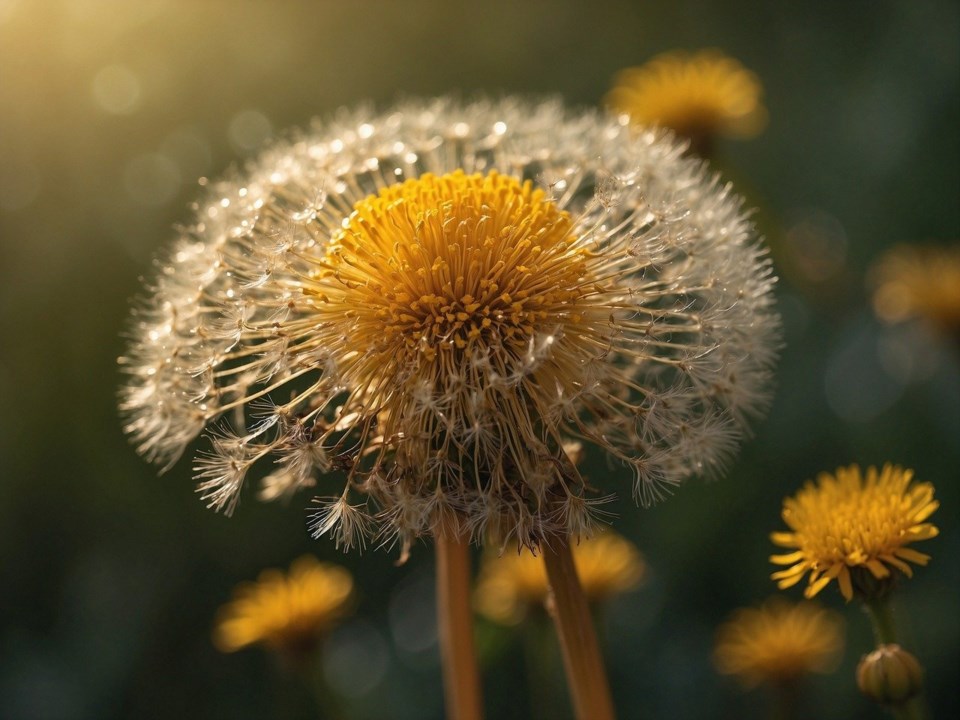UNITY – As the snow melts each year, the trees and grass all come back to life, adding some much-needed colour to the drab background from the winter months. Along with all the luscious green, pops of yellow seem to emerge from the ground. The dandelion.
Dandelions have been considered a ‘weed’, a plant that grows where it is not wanted and seem to have gotten a bad reputation over the years. It does not take long for some lawn manicurists to eradicate the blossoms, fearing they will turn to seed and repopulate the pristine landscaping. Even though some may consider the plant to be unsightly, the dandelion brings a cheery welcome to spring and children love to blow on the seed puffs, watching the breeze carry them off to a whole new life. But are these flowers really as bad as we think they are?
When left in the wild, these flowers are a great source of nutrition to many insects and birds. A dandelion’s nectar is one of the earliest sources of food and when the blossom turns to fluff, the seeds are a food source for birds such as bullfinches, greenfinches, goldfinches and serins. Even the leaves are eaten by many caterpillars before turning into moths and butterflies.
While the dandelion is a great source of food for nature’s creatures, there is also an ornamental value to the plant. By adding a few of the blossoms to vegetable gardens, more pollinators are attracted to all the blooms, which then creates better crop production.
But the plant is not only beneficial above ground. With a deep taproot and smaller wide-spreading roots, the dandelion can loosen hard-packed soils while aerating the ground and reduce erosion. The taproot also pulls nutrients from deeper levels of soil, bringing them closer to the earth and fertilizing other plants nearby. Because an individual plant can live for years, some roots can reach down 15 feet.
Not only is a dandelion good for other plants and animals, but it has also been known to help humans. The flower, greens and root are safe and edible for human consumption, packed with more nutrients and vitamins than most food you can grow in your own garden. It is best to pick younger, smaller plants to eliminate a bitter taste.
The flower is an excellent source of antioxidants along with vitamins A and B12. It is best to pick larger heads that are fully in flower. The bright yellow petals are gently plucked from the head – to either be used immediately or dried - to be used in teas, batters, syrups and even wine.
Getting enough leafy greens into our diets is hard enough, so adding young dandelion leaves are an ideal additive to any salad or using on top of a baked potato. Like spinach, they can used in both raw and cooked dishes. One cup of chopped greens has a good supply of potassium and vitamins A, C and K. With a natural salty flavour, the leaves can be used to season foods instead of reaching for the table salt.
The roots of a dandelion have been used for centuries as a medicinal product, helping with better digestion to healing the liver. Over the years, scientists have discovered the roots are a natural diuretic, helping to flush the kidneys and liver. The roots are usually dried then ground to be used as a tea or coffee substitute. The powder can also be used as a supplement in capsule, extract or tincture forms.
The whole plant should be washed thoroughly prior to consumption. For anyone who wants to try dandelions, be sure to pick plants that have not been touched by herbicides, pesticides, fertilizers, heavy metals or other forms of chemical pollution. Washing the product does not guarantee all chemicals have been removed.
Let’s face it, the dandelion will never be eradicated, with their upsides and benefits for just about anyone or anything. So as long as we have the bright yellow blossoms, take advantage of what we have in our own back yard. Happy foraging!



.jpg;w=120;h=80;mode=crop)
